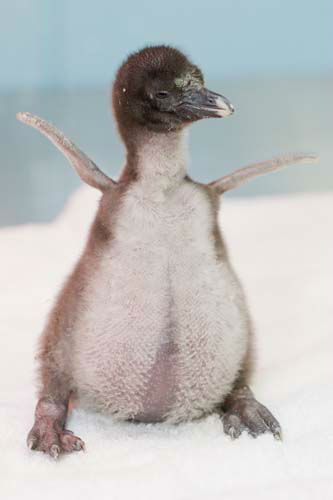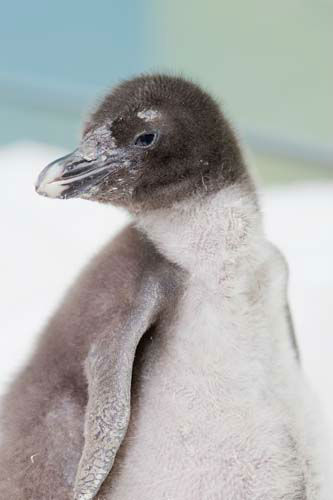July 24, 2013 (CHICAGO) --
Lana Vanagasem, manager of animal care and training at Shedd Aquarium, talks to ABC7 Chicago about the new baby penguin.
FAST FACTS: - Approximately one month ago, a rockhopper penguin chick was born at the aquarium. This penguin's parents choose an open nesting location, which can easily be seen in the habitat. Visitors have the rarely seen opportunity to watch and learn about a penguin chick as it develops and grows.
- Rockhoppers are easy to identify by the distinctive crest feathers on their heads, bright orange-red bills and tiny blood-red eyes. Instead of these adult feathers, the chick is distinctive with its downy plumage.
- Penguin chicks grow up fast! Shedd's animal care experts observe and weigh the bird daily. Born at 75 grams, the chick gains approximately 40 grams per day and is now more than 2.2 pounds.
- Mother and father care for the hatchling, sharing parenting responsibilities such as feeding in equal shifts. When the chick reaches 75-90 days it will leave the nest, acquiring waterproof plumage and diving into its swimming skills for the first time.
- The gender of the chick has yet to be determined. It is difficult to identify gender in penguins without genetic testing as there is no observable difference in male and female anatomy.
- Conservation: Due to disease and warming ocean temperatures, the rockhopper population is listed as 'vulnerable' by the International Union for the Conservation of Nature.
- Exhibit: Guests visiting the Shedd Aquarium have the opportunity to learn about two species of penguins: rockhopper and Magellanic.
- A healthy rockhopper penguin chick hatched at Chicago's Shedd Aquarium- and is already greeting guests at Polar Play Zone.

Shedd Aquarium, a leader in animal care and conservation, announced the successful birth of a healthy rockhopper penguin (Eudyptes chrysocome) chick. The young bird hatched at the aquarium just under a month ago, and is thriving before guests' eyes each day - gaining weight, eating and building a relationship with its feathery neighbors on exhibit in Polar Play Zone. The open nesting location allows guests the rarely seen opportunity to watch and learn about the chick as it develops and grows. Visitors also have the unique chance to see mother and father care for the hatchling, sharing parenting responsibilities in equal shifts.
The gender of the chick has yet to be determined. It is difficult to identify gender in penguins without genetic testing as there is no observable difference in male and female anatomy. The experienced parental penguin pair is feeding the bird well, according to Ken Ramirez, executive vice president of animal care and training for Shedd, but there are more key milestones ahead. The chick will learn to eat on its own before acquiring waterproof plumage and diving into its swimming skills for the first time.
source



















No comments:
Post a Comment